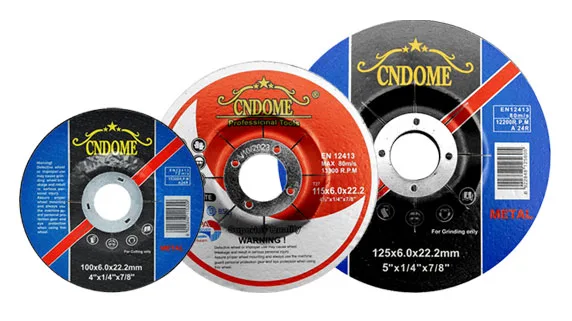When it comes to metalworking or any application that involves grinding, the choice of a grinding wheel can make a significant difference in the quality of your work. Selecting the right grinding wheel is not just about picking the first one you see; it’s a crucial decision that affects your project’s outcome. In this guide, we’ll explore the key factors you should consider to choose the perfect grinding disc for your needs.
1. Understand Your Grinding Application
The first step in selecting a grinding wheel is to understand your specific application. Different tasks, such as cutting, sharpening, deburring, or shaping, require different types of grinding wheels. For example, if you’re working on metal, you’ll need a wheel designed for metal grinding.
2. Consider the Material You’re Grinding
The material you’re grinding plays a critical role in your wheel selection. Grinding wheels are typically designed for specific materials, including steel, aluminum, stainless steel, and more. Using the wrong wheel for a particular material can result in inefficient grinding and poor results.
3. Understand the Grit Size
Grit size refers to the size of the abrasive particles in the grinding disc. It’s denoted by a number, with lower numbers indicating larger abrasive particles and coarser grit. Higher numbers represent finer grit. For rough grinding and material removal, you’d opt for a coarser grit, while finer grit is suitable for finishing and achieving a smooth surface.
4. Choose the Right Wheel Type
There are various types of grinding wheels, including:
Straight Grinding Wheels: These are the most common type and are used for general-purpose grinding.
Cylinder or Wheel Ring Grinding Wheels: Ideal for internal grinding tasks.
Dish Cup Grinding Wheels: Suitable for surface grinding.
Tapered Grinding Wheels: Great for thread and gear grinding.
Diamond Wheels: These are used for grinding materials like carbide and other hard, non-metallic materials.
Each type has specific characteristics that make it suitable for particular applications.
5. Consider Wheel Bond
The bond of a grinding wheel holds the abrasive grains together and affects wheel performance. Different bonds are suitable for various applications. For instance, resin bonds are excellent for cutting and grinding steel, while vitrified bonds are more suitable for precision grinding.
6. Wheel Hardness Matters
The hardness of a grinding disc affects its cutting ability and its ability to withstand wear. Softer wheels tend to wear out faster but provide smoother finishes. Harder wheels last longer but may not provide the same surface finish. The choice depends on your project’s requirements.
7. Safety First
Safety should be a top priority when choosing a grinding wheel. Ensure that the wheel you select complies with safety standards and is designed for your specific grinder. Always wear appropriate safety gear, including eye protection, gloves, and dust masks when grinding.
8. Seek Expert Advice
If you’re uncertain about which grinding wheel is best for your needs, don’t hesitate to seek advice from experts, such as suppliers or experienced colleagues. They can provide valuable insights and recommendations based on your specific requirements.
In conclusion, choosing the right grinding wheel is a crucial decision that directly impacts the quality and efficiency of your work. By considering factors like the application, material, grit size, wheel type, bond, hardness, and safety, you can make an informed choice that ensures optimal results and safety in your grinding projects.




